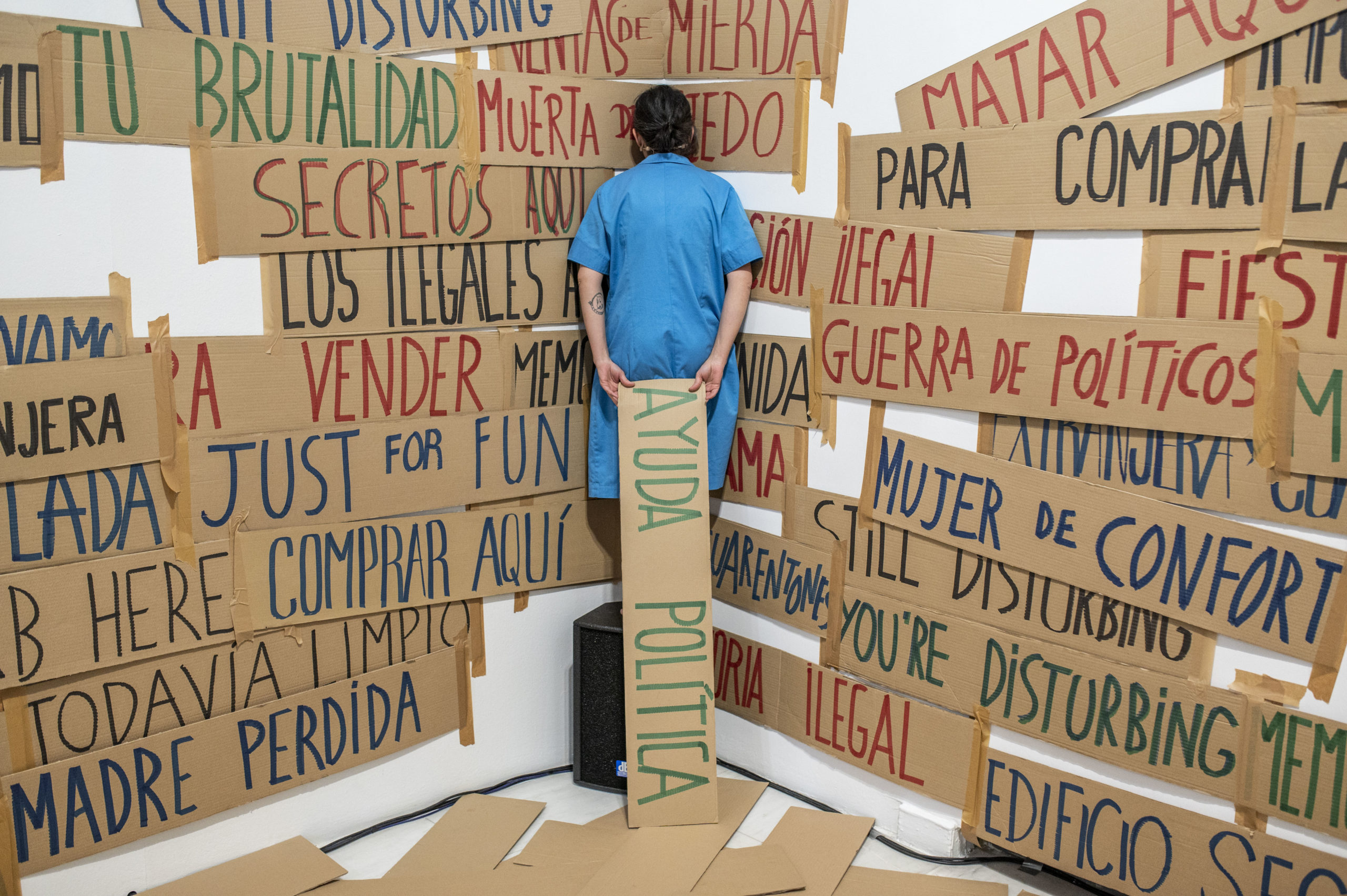Premiere June 12th 2006 at Art Unlimited – Art Basel 37 (Switzerland) Produced by Galería Soledad Lorenzo, Madrid, Spain. Written and Directed: La Ribot. English translation with Catherine Phelps. Sound Design: Clive Jenkins. Performers since 2013: Ruth Childs, Tamara Alegre, Olivia Csiky Trnka and Fernando de Miguel. Original Performers: Marie-Caroline Hominal, Delphine Rosay, La Ribot and Clive Jenkins. In year 2011 Residence Project at Theatre PoleSud Strasbourg France with Beatrice Beaucaire, Naton Goetz, Marjorie Burger-Chassinet and Gaetan Gromer. La Ribot is supported by La Ville de Genève, La République et Canton de Genève, Pro Helvetia Swiss Arts Council, and La Loterie Romande. Many thanks to Sophie Alphonso, Yan Duyvendak, Michel Hamerski, Nelson Jimenez, Gilles Jobin, Sylvie Kleiber, Yann Marussich, Daisy Phillips, Ruth Childs, Ursula Achternkamp, Victor Roy, Pablo Jobin, Karine Vintache, Maria-Carmela Mini, Mélanie Rouquier, Soledad Lorenzo.Thanks to Magda Ptasznik as performer.
Performance/ Dance/ Installation
The performance-installation Laughing Hole was launched at Art Unlimited at Art Basel 37, Switzerland, in 2006, and in one of its iterations lasted six hours, making it La Ribot’s longest work. According to writer Jaime Conde-Salazar it’s also her most overtly political piece: an expression of anger and revulsion towards “the illegal prison of Guantánamo and the whole ideological operation surrounding the subject ”. Three female performers dressed in cleaners’ overalls sort through hundreds of cardboard placards that, face down, litter the floor of the performance space. One by one they display the cards and tape them to the walls, filling the space with disjointed, often politically tendentious, phrases, such as “die here”, “anonymous in Guantánamo”, “brutal hole”, “Gaza party”, “secret death”, “shit spectator”, “immigrant on sale” or “impotent terror”. The performers laugh continuously and, as fatigue takes over, with increasing desperation. Also at work is a sound artist who records and electronically morphs the laughter, amplifying the piece’s already conflicted atmosphere.
Laughing Hole’s “obsessive and hysterical laughter… inevitably recalls Hannah Arendt’s laughter” when faced with the “banality of evil” during the Nuremberg trials, Conde-Salazar suggests. In his view the work’s critique turns on an oscillation between moments of truly hedonistic laughter and a strained hilarity that is forced rather than felt. Dance historian Ramsay Burt reads the work’s dynamic a little differently; for him the sheer persistence of the performers’ laughter shows that “they were not giving expression to any psychological motivation but… executing a task”, denaturalising the act of laughing altogether and staging “a prolonged interruption of the discourse of bodily communication”.
The piece’s laughter is also a gesture of dissent towards the dehumanizing verbal imagery of the mass media. Echoing the brutality of tabloid headlines, Laughing Hole’s texts protest not just Western abuses of human rights, but the manner in which the media presents them to the citizens in whose names they’ve been perpetrated.
 La Ribot Laughing Hole fotografiado por el fotografo Pablo Lorente en la sala alcala 31 para Cultura de la Comunidad Madrid el sabado 19 de febrero de 2022
La Ribot Laughing Hole fotografiado por el fotografo Pablo Lorente en la sala alcala 31 para Cultura de la Comunidad Madrid el sabado 19 de febrero de 2022
 La Ribot Laughing Hole fotografiado por el fotografo Pablo Lorente en la sala alcala 31 para Cultura de la Comunidad Madrid el sabado 19 de febrero de 2022
La Ribot Laughing Hole fotografiado por el fotografo Pablo Lorente en la sala alcala 31 para Cultura de la Comunidad Madrid el sabado 19 de febrero de 2022

